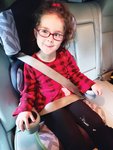
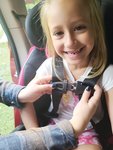
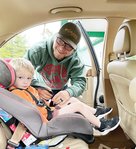
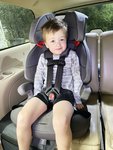
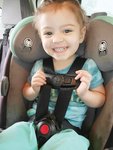
It is often said that children are our greatest treasure, and it is undeniable they are definitely the single most important resource for the future of society. However, too often their safety and protection when we are moving about our roads is often overlooked.
The United States Department of Transportation and the National Highway Traffic Safety Administration are teaming up again to promote National Child Passenger Safety Week, Sept. 19-25.
“Car crashes are a leading cause of death for children,” the NHTSA released a statement with some numbers attached. “On average, two children under 13 were killed and an estimated 374 were injured every day in 2019 while riding in cars, SUVs, pickups, and vans.”
The NHTSA released some more statistics that showed a trend in the wrong direction:
According to the NHTSA, car seats and boosters are one of the easiest ways to keep a child safe while in a vehicle. If installed correctly, they estimate that car seats can reduce the risk of fatal injury in a crash by 71 percent for infants and 54 percent for toddlers.
The key to safety is the correct installation of safety seats, and according to the US DOT, too often this is not the case. In 2017, estimated 325 children under the age of 5 were saved by proper use of safety seats, however, the DOT states that an additional 46 children could have been saved if every child was properly buckled.
“Since National Child Safety Awareness week is coming up, the Sparta Police Department would like to send out a reminder of the child seat requirements,” Doug Goff, police chief, said, and then provided a chart for quick reference (see graphic).
In addition, Goff provided a list of recommendations for ensuring the safety of child passengers on Tennessee’s roadways.
“Lead by example,” Sparta fire chief Kirk Young, whose department is often among the first on the scene of an accident, said. “Adults should always buckle up. Kids do what they see. Start with leading by example.”
Young went on to list other rules for ensuring the safety of child passengers:
Young also pointed out that, if an accident does occur, if at all possible, it is best to remove the car seat with the child from the vehicle.
“If your car is going to be towed from the scene, who is transporting you? Do they have the proper safety seat?” he said. “That seat may have just saved their life. You better be taking it for the next trip too.”
Goff also addressed the scenario of a parent not being able to provide aid to a child at the time of an accident and offered advice for ways that parents can help first responders, saying that placing an identifying card with the name, age, address, and emergency contact on the seat belt strap or child restraint could prove helpful. He also added that a list of disabilities or medical conditions could speed up the time it takes to get critical care for a child.
“This will help if you are involved in a vehicle accident or incapacitated and unable to inform emergency personal of the child’s condition to make the incident less traumatic for them,” Goff explained.
Both Young and Goff are parents and understand the complexities of keeping children safe as they grow.
“I know it’s tough trying to keep toddlers in a child restraint seat once they realize how to unbuckle themselves,” Goff said, and then listed some of his own suggestions for keeping children occupied during road trips.
Here are a few ideas on how to keep the child entertained until you get to your location:
Young, again, reminded adults that the responsibility for child passenger safety lies in their actions.
“Don’t make any exceptions to the rules,” Young said. “It doesn’t matter if you are going ‘just down the road’ for a visit or a fun little ride, you never know when an accident can happen. No exceptions to the rules. Ever.”
As for the installation of child restraint seats, Goff said not to hesitate to make a quick visit to the local law enforcement office where an officer will answer questions, provide assistance, and guide parents in the direction of local child restraint technicians that can provide more assistance with proper installation.
Other items that may interest you

Comments
No comments on this item Please log in to comment by clicking here